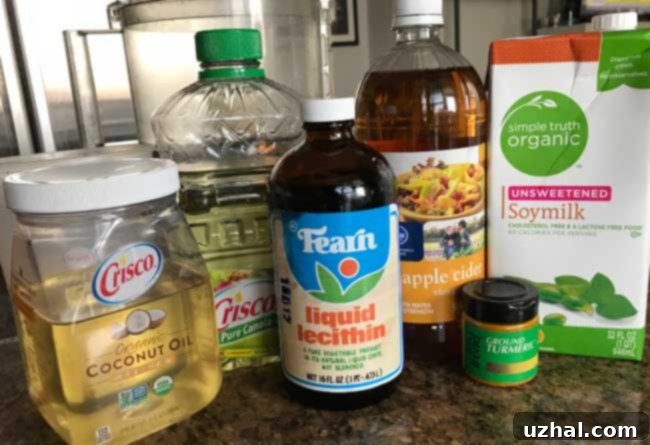Homemade Vegan Butter Recipe: Your Ultimate Guide to Dairy-Free Deliciousness
Embark on a culinary journey to create your own luscious, plant-based butter right in your kitchen! This homemade vegan butter recipe, originally shared in 2018, has stood the test of time, becoming an enduring favorite for its remarkable versatility and delicious flavor. While technically a “vegan margarine” due to its blend of oils and plant milk, it looks, tastes, and performs so much like traditional butter that “plant butter” is the more fitting and widely accepted term. Whatever you call it, this recipe offers a superior alternative to many store-bought options, especially with the rising cost of dairy butter making homemade versions an increasingly appealing and economical choice.
I’ve relied on this recipe consistently over the years, and it continues to be my go-to for all my baking and spreading needs. My method largely remains faithful to the original, though I’ve embraced modern conveniences like silicone mini muffin pans for easy molding. I also love experimenting with additional flavorings, which I’ve detailed further down, to customize it for specific dishes. Get ready to transform simple ingredients into a pantry staple you’ll wonder how you ever lived without!
Jump to Recipe
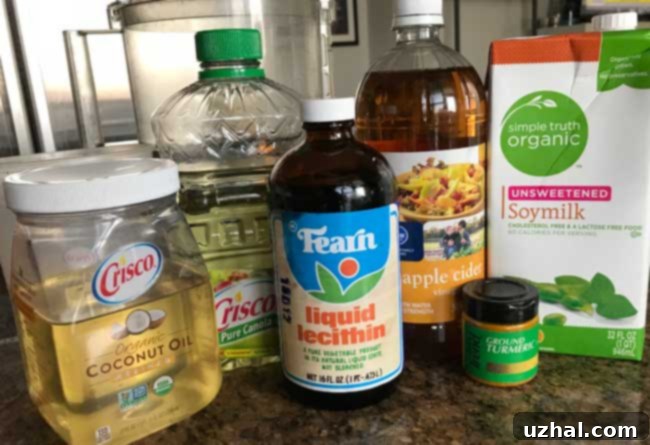
What’s In Homemade Vegan Butter?
At its core, homemade vegan butter is a marvel of emulsion, combining carefully selected plant-based ingredients to mimic the texture, flavor, and performance of dairy butter. The magic truly happens when a blend of rich refined coconut oil, light canola oil, creamy soy milk, and tangy apple cider vinegar is emulsified with a touch of lecithin. This combination transforms into a smooth, stable, and remarkably spreadable product that excels in both baking and general cooking.
- Refined Coconut Oil: This is the backbone of our vegan butter, providing the solid structure and creamy mouthfeel. Using *refined* coconut oil is crucial here, as it lacks the distinct coconut flavor of unrefined versions, ensuring a neutral taste that won’t overpower your dishes. It helps the butter solidify at cooler temperatures.
- Canola Oil: Complementing the coconut oil, canola oil adds a liquid fat component that contributes to the butter’s spreadability at room temperature. It also helps in achieving a desirable texture, preventing the butter from becoming too hard when chilled. Other neutral oils like sunflower or grapeseed oil can also work.
- Soy Milk: As the primary liquid in this recipe, soy milk plays a vital role in the emulsification process. Its protein content helps stabilize the mixture. When combined with apple cider vinegar, it gently curdles, creating a “buttermilk” effect that adds a subtle tang, reminiscent of real dairy butter, and further aids in emulsion stability.
- Apple Cider Vinegar: This ingredient is key to activating the soy milk, causing it to curdle and thicken. Beyond its role in emulsion, it provides a slight acidic note that brightens the flavor profile, contributing to that classic buttery taste.
- Lecithin (Soy or Sunflower): This is arguably the most critical ingredient for achieving a smooth, homogenous texture. Lecithin is a natural emulsifier, meaning it helps the oil and water components of the mixture blend seamlessly and remain stable, preventing separation. It’s what gives our homemade vegan butter its luxurious, velvety consistency.
- Salt: Essential for flavor, just like in dairy butter. You can adjust the amount to taste or omit it if you prefer unsalted vegan butter for specific recipes.
- Turmeric or Annatto (Optional for Color): These natural ingredients provide a lovely golden hue, making your homemade vegan butter look even more authentic.
In my experience, this homemade blend surpasses many store-bought vegan baking sticks and margarines in both flavor and performance. While the original recipe from Veganbaking.net suggested xanthan gum for a slightly softer, more spreadable consistency, I’ve found that omitting it and simply allowing the butter to soften at room temperature before use yields excellent results without compromising texture. My other minor adjustments, like adding a pinch of turmeric for color and using plastic-lined mini loaf pans (or even silicone mini muffin molds, as I do now), have only enhanced the experience.
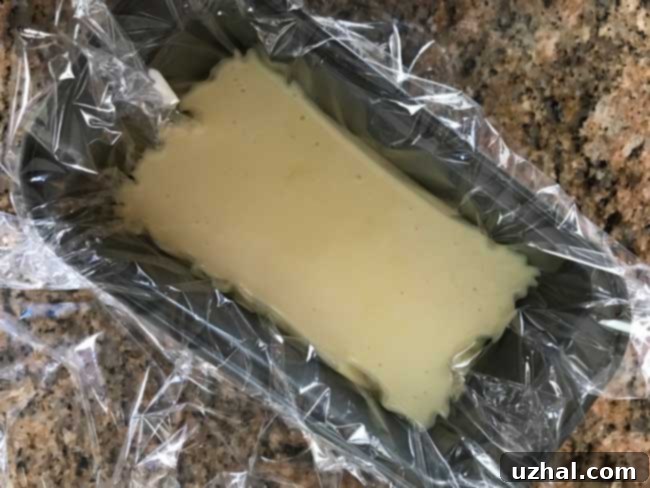
Versatile Uses for Your Homemade Vegan Butter
The true beauty of this homemade vegan butter lies in its incredible versatility. It’s designed to be a direct substitute for dairy butter in nearly all applications, making it an invaluable addition to any plant-based kitchen. Whether you’re a seasoned vegan baker or simply looking for a healthier alternative, this plant butter will not disappoint. Here are some of my favorite ways to incorporate it into everyday cooking and special treats:
Baking Excellence
This vegan butter shines brightest in baking, where its composition allows it to mimic dairy butter’s role in creating tender, flaky, and rich textures. I’ve successfully used it in a variety of baked goods:
- Scones: For light and airy scones with that perfect crumb, this vegan butter holds up beautifully, contributing to a tender interior and slightly crisp exterior.
- Chocolate Chip Cookies: It helps achieve that classic chewy texture and promotes a lovely golden-brown finish, without any dairy. The flavor melds seamlessly with chocolate and vanilla.
- Pie Dough: Creating flaky pie crusts is often a challenge with vegan alternatives, but this homemade butter delivers! Its solid yet pliable consistency helps form those desirable layers, resulting in a delightfully crisp and tender crust for any sweet or savory pie.
- Shortbread Cookies: This is where it truly excels! I’ve used it in vegan shortbread recipes, and the results are consistently amazing. The butter’s unique composition lends itself to a crumbly, light, and perfectly buttery-tasting shortbread, despite the absence of any actual butter. I suspect the subtle “buttery” flavor often attributed to dairy comes through in the soy milk and apple cider vinegar combination, creating a delightful sensory experience.
Everyday Spreading and Cooking
Beyond baking, this vegan butter is fantastic for everyday uses, adding richness and flavor to various dishes:
- Garlic Bread: Spread generously on bread, it melts beautifully under heat, infusing the garlic and herbs with a rich, savory base.
- Toast and Bagels: A simple yet satisfying application. When softened, it spreads smoothly over warm toast or a toasted bagel, offering a comforting, buttery experience.
- Sautéing Vegetables: Use it to sauté your favorite vegetables, adding a subtle depth of flavor that only butter can provide.
- Making Roux: For thickening sauces or gravies, this vegan butter works just like dairy butter to create a smooth roux.
- Pancakes and Waffles: Melt a dollop over a stack of warm pancakes or waffles for an extra touch of decadence.
This recipe comes together quite quickly, and you can begin using your fresh batch of vegan butter as soon as an hour after it’s made, or even sooner if you don’t require it to be fully solidified. Its convenience and superior quality make it a staple once you try it!
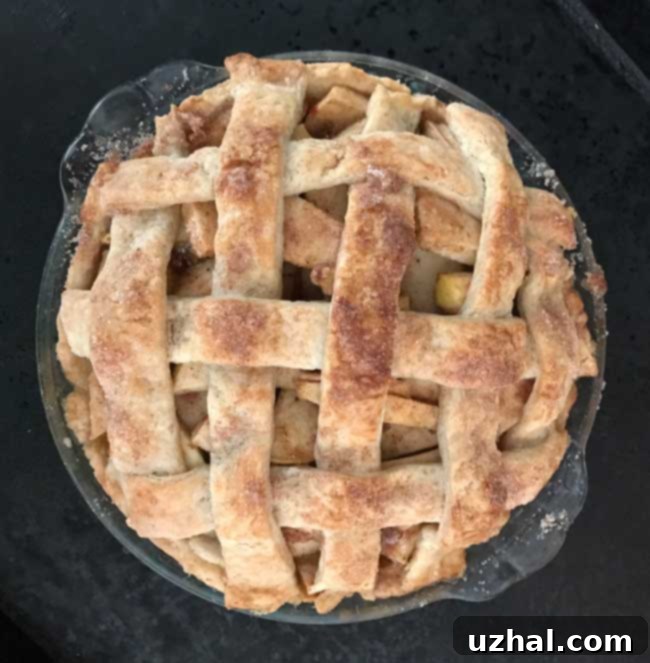
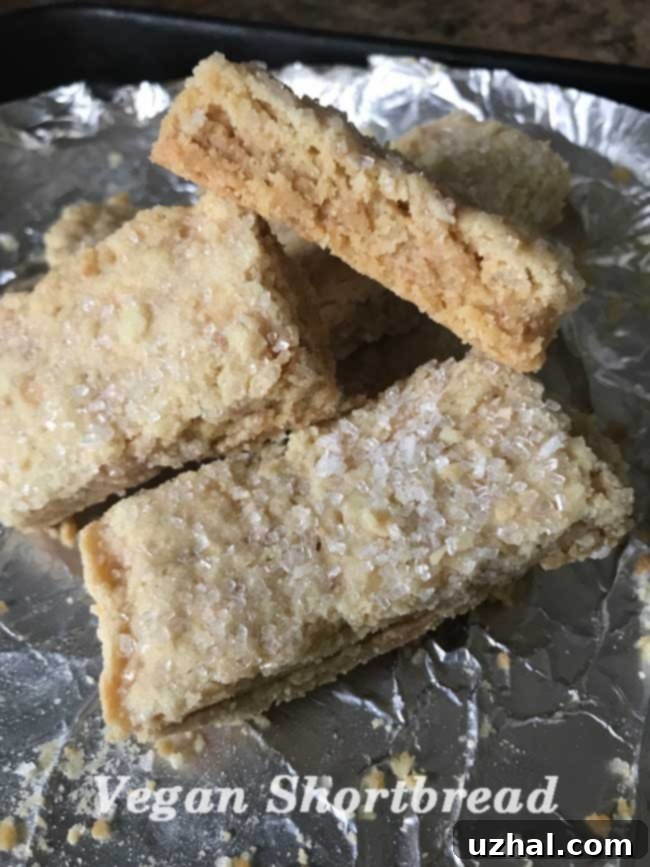
Elevating Your Vegan Butter: Flavorings and Color Enhancements
While the base recipe for this homemade vegan butter offers a subtly pleasant flavor that works universally, there’s ample room for customization. You can easily elevate its taste profile or enhance its visual appeal to suit specific culinary applications. Personalizing your plant butter is part of the fun of making it at home!
Boost the Flavor
For those who crave a more pronounced “buttery” or savory note, consider these additions:
- White Miso Paste: Adding 2 teaspoons of white miso paste introduces a fantastic umami depth to the butter. White miso, being a fermented soybean paste, offers a complex, savory, and slightly sweet flavor that can beautifully mimic the richness often found in cultured dairy butter. It’s a game-changer for enhancing the overall “butteriness.”
- Nutritional Yeast: A teaspoon of nutritional yeast can impart a cheesy, nutty, and distinctly savory flavor. It’s a popular ingredient in vegan cooking for adding a “cheesy” essence, and here, it contributes to a more robust, flavorful butter that’s wonderful on toast or in savory dishes.
Experiment with these additions to find what best suits your palate. You might even try a combination of both for a truly unique and flavorful plant butter.
Achieve the Perfect Golden Hue
Many people associate butter with its characteristic yellow color. Here are options to achieve that appealing tint naturally:
- Turmeric: A tiny pinch of ground turmeric is an easy and effective way to give your vegan butter a lovely golden color. Be mindful not to add too much, as it can impart a slight earthy flavor if overdone. A small amount, just enough for color, is usually sufficient.
- Annatto: For a more neutral coloring agent that doesn’t affect flavor, annatto powder (also known as achiote) is an excellent choice. This ground seed is widely used in commercial dairy and plant-based products for its natural orange-yellow pigment. It’s relatively easy to find in Mexican grocery stores or online and offers a vibrant color without any noticeable taste impact.
Considerations for Texture
You might encounter other vegan butter recipes that suggest additions like almond flour for texture. However, for this particular recipe, I advise against it. The liquid lecithin is intentionally chosen for its ability to create a uniquely luxurious and silky-smooth consistency. Introducing almond flour, or other solid additives, could detract from this desirable creaminess and compromise the elegant mouthfeel that lecithin imparts. While some recipes with almond flour are intriguing, they often aim for a different textural outcome. This recipe prioritizes that rich, smooth finish.
A Secret Ingredient: Orville Redenbacher Popping and Topping Oil
In my continuous quest to perfect this homemade vegan butter, I’ve stumbled upon a delightful addition that brings both convenience and an extra layer of “buttery” goodness: a tablespoon of Orville Redenbacher’s buttery tasting popping and topping oil. This specific product offers several advantages that make it a compelling ingredient in this recipe.
- Enhanced Color: This oil naturally possesses a rich yellow hue, which effectively eliminates the need for adding turmeric or annatto for color. It provides that classic butter-like appearance effortlessly, streamlining the preparation process.
- Subtle Buttery Flavor: True to its name, the oil imparts a very subtle, yet distinct, hint of buttery flavor. This tiny enhancement contributes to the overall dairy-like experience without being overpowering, making the vegan butter even more convincing.
- Potential for Improved Browning in Baking: As this oil is primarily soybean oil, there’s a hypothesis that it might contribute to better browning when the homemade vegan butter is used in baking applications. Dairy butter, with its milk solids and specific fat composition, is known for promoting desirable browning through the Maillard reaction. While plant-based fats can brown, the exact mechanism and intensity can vary. Soybean oil’s fatty acid profile and processing might lend it properties closer to dairy fat in this regard. However, I must emphasize that “the jury is still out” on this particular benefit. Extensive testing across various baking recipes would be needed to definitively confirm its impact on browning. Factors such as sugar content, baking temperature, and other ingredients can also heavily influence the final color of baked goods. Nevertheless, it’s an intriguing possibility that adds another layer of appeal to this clever modification.
Incorporating this special oil is an optional but highly recommended step for those looking to further refine their homemade vegan butter, particularly if a convenient, ready-made buttery flavor and color are desired.
- Peanut Butter Ice Cream
- Cinnamon Apple Cider Bread Recipe for Fall
- Crackly Canola Oil Ginger Cookies
- Top 10 Apple Recipes
- Whole Foods Oatmeal Cookie Recipe
Recipe: Homemade Vegan Butter
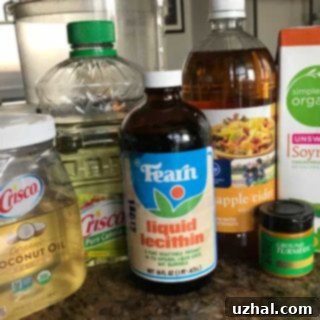
Vegan Butter
Anna
Pin Recipe
Ingredients
- ¼ cup + 2 teaspoons soy milk (60 grams)
- 1 teaspoon apple cider vinegar
- ⅛ teaspoon salt can omit if desired
- ½ cup + 2 tablespoons + 1 teaspoon (130 grams) refined coconut oil, melted
- 1 Tablespoon canola oil OR a tablespoon of buttery popcorn oil (See note)
- 1 teaspoon liquid soy lecithin or sunflower lecithin
- tiny pinch of turmeric for color optional
Instructions
-
Line a mini loaf pan (3×5 inch) with plastic wrap. If you don’t have a mini loaf pan you can use a small bowl, custard cups or even muffin tins. Silicone molds are also excellent for easy removal.
-
In a small bowl, measure out the soy milk, then stir in 1 teaspoon of apple cider vinegar and ⅛ teaspoon salt. Let this mixture stand for about 10 minutes. During this time, the soy milk will curdle and visibly thicken, creating a “vegan buttermilk” that is crucial for flavor and the final emulsion.
-
In the bowl of a food processor or a high-speed blender, combine the melted refined coconut oil and the canola oil (or buttery popcorn oil, if using). Add the curdled soy milk mixture, liquid lecithin, and turmeric (if using for color). Process for approximately 2 minutes, or until the mixture is completely smooth, creamy, and appears homogenous. Ensure there are no visible oil or water separations.
-
Carefully pour the processed mixture into your prepared mini loaf pan or silicone molds. Transfer the pan to the freezer for at least 1 hour, or until it is firm and fully set. This rapid chilling helps the butter solidify quickly and maintain its smooth texture.
-
Once set, remove the vegan butter from the mold. You should yield approximately 1 cup of homemade vegan butter. For accurate baking, weigh out 114 grams for every half cup that a recipe calls for. Store any unused butter in an airtight container in the refrigerator for up to 2-3 weeks, or freeze for longer storage (up to 3 months).
Notes
Storage Tips and FAQs for Homemade Vegan Butter
Now that you’ve mastered the art of making your own vegan butter, understanding how to store it and troubleshoot common issues will ensure you always have a fresh supply on hand. Properly stored, your homemade plant butter can last for weeks, making it a convenient staple.
Storage Guidelines
- Refrigeration: Once your vegan butter has fully set, remove it from its mold and store it in an airtight container or wrapped tightly in parchment paper or plastic wrap in the refrigerator. It will maintain its freshness and quality for up to 2-3 weeks. The texture will be firm when cold, similar to dairy butter, and will soften at room temperature.
- Freezing: For longer storage, vegan butter freezes exceptionally well. Wrap individual portions or a whole block tightly in plastic wrap, then place it in a freezer-safe bag or container. It can be stored in the freezer for up to 3 months. To use, simply transfer it to the refrigerator the night before to thaw.
Frequently Asked Questions (FAQs)
Here are answers to some common questions that arise when making homemade vegan butter:
Can I use other plant milks besides soy milk?
Soy milk is highly recommended for this recipe due to its protein content, which greatly assists in creating a stable emulsion. Other plant milks like oat milk or almond milk can be used, but the results may vary. They might not curdle as effectively with apple cider vinegar, and the final butter might be slightly less stable or have a different texture. If you do use an alternative, ensure it’s unsweetened and unflavored.
What if my vegan butter doesn’t set or separates?
If your butter doesn’t set firm, it could be due to not enough refined coconut oil or insufficient chilling time. Ensure your coconut oil is fully melted but not hot, and that you’re using the correct proportions. If it separates, it typically means the emulsion didn’t fully form. This could be because the ingredients weren’t processed long enough in the food processor/blender, or the lecithin wasn’t adequately incorporated. Ensure you process for the full 2 minutes until completely smooth and homogenous. You might also try blending at a higher speed next time.
Is lecithin absolutely necessary?
While some minimalist recipes omit lecithin, it is highly recommended for achieving the ideal creamy, stable texture that closely mimics dairy butter. Lecithin acts as a crucial emulsifier, preventing the oil and water phases from separating. Without it, your butter might be more prone to separation and have a less uniform texture.
Can I scale the recipe up or down?
Yes, you can easily double or halve this recipe to suit your needs. Just ensure you maintain the correct ratios of ingredients. If scaling up, you might need a larger food processor or blender.
What kind of food processor or blender should I use?
A good quality food processor or a high-speed blender is essential for achieving a perfectly smooth emulsion. Standard blenders might struggle to fully combine the ingredients into a stable butter. The more powerful the appliance, the better the emulsion.
Making your own vegan butter is a rewarding experience that offers a fresh, customizable, and often more affordable alternative to store-bought options. With these tips and the detailed recipe, you’re well-equipped to create a delicious plant-based butter that will elevate your cooking and baking endeavors. Enjoy the freedom of homemade!
